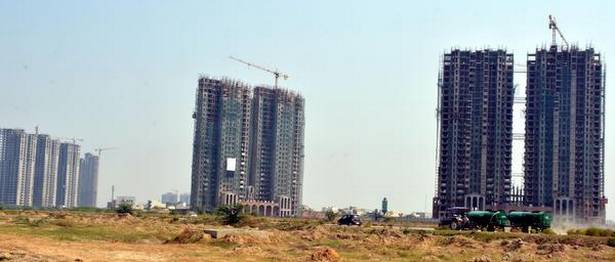
PE inflows in residential projects down 82% at $266 mn in 2018, commercial sector draws $2.8 bn
Commercial real estate investments from institutional investors are at a four-year high in India as investments in residential projects have dropped to a four-year low, according to a new report from Anarock Consultants.
The commercial office segment saw the highest inflows, accounting for a massive 70 per cent share of the total institutional investments in the industry in 2018. Retail real estate came in a distant second with 7 per cent, and the residential sector drew the least private equity among the three sectors, with less than 7 per cent of the overall share.
The report says of the total PE inflows of $14 billion in the sector in the last four years, 2017 and 2018 collectively saw maximum investments to the tune of $8.6 billion.
Shobhit Agarwal, MD & CEO – ANAROCK Capital says, “Currently, funding is a major hurdle for Indian real estate’s growth prospects – especially post the NBFC crisis. Private equity funding is the best alternative for developers, who qualify for it. Despite a decline of 9 per cent in PE inflows in 2018 against the preceding year, 2019 will bring a marked increase in private equity funding because of India’s first REIT listing.”
“From this point onward, commercial real estate – especially Grade A office spaces – will attract considerable investments,” he says. “Nevertheless, much of the industry’s prospects also hinge on the outcome of the upcoming general elections. Institutional investors will continue to pump in funds into the real estate industry if they can rely on political stability, proactive policies and a favourable microeconomic environment.”
The report further states that despite deal numbers declining since 2015, the average deal size has increased by nearly 172 per cent in the last four years – from $47 million in 2015 to $128 million in 2018. Interestingly, the top five deals in 2018 alone contributed almost 50 per cent of total investments during the year. PE investors have become more cautious about selecting and associating with developers; however, once confident, they are making larger investments.
“A segment-wise breakdown indicates that commercial realty saw an annual increase of 27 per cent in PE investments – from nearly $2.2 bn in 2017 to over $2.8 billion in 2018,” says Agarwal. “High occupancy levels, relatively lower rentals in dollar terms, quality Grade A assets and high-quality tenants are the key reasons for commercial space drawing around 70 per cent of the overall share of the total private equity investments in 2018. Considering high demand, fund exits have been relatively easier in commercial real estate – and with REITs being launched, they will become even easier.”
In less than three months into 2019, Anarock said it has already seen PE equity investments touch almost $1 billion, the majority of it coming through a single deal, when Brookfield acquired a portfolio of hotel assets of Leela Ventures for $570 million recently.
Also, investors’ interest in long-term real estate plays with preferred developers continues to be visible, with more than $500 million of additional platforms getting created in just 2.5 months. As we speak, the REIT offering by the Blackstone – Embassy Group is ongoing. If the interest for this new investment platform is as expected, it will open a new chapter in the country’s real estate space, the report said.
Going forward in 2019, institutional investors are likely to continue infusing investments in the maturing Indian real estate market, which offers more scope for growth than developed countries, with mature real estate markets. Moreover, strategic policy relaxations to boost the ease of doing business, coupled with the rapidly transformed business environment, will continue to attract private equity to Indian real estate.
[“source=thehindubusinessline”]



